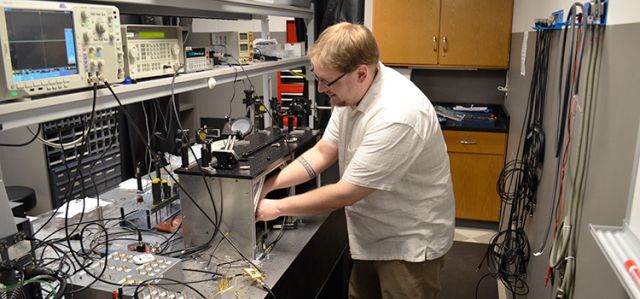Deep Turbulence Effects Compensation Experiments with a Cascaded Adaptive Optics System Using a 3.63 m Telescope
Document Type
Article
Publication Date
1-1-2009
Publication Source
Applied Optics
Abstract
Compensation of extended (deep) turbulence effects is one of the most challenging problems in adaptive optics (AO). In the AO approach described, the deep turbulence wave propagation regime was achieved by imaging stars at low elevation angles when image quality improvement with conventional AO was poor. These experiments were conducted at the U.S. Air Force Maui Optical and Supercomputing Site (AMOS) by using the 3.63 m telescope located on Haleakala, Maui. To enhance compensation performance we used a cascaded AO system composed of a conventional AO system based on a Shack–Hartmann wavefront sensor and a deformable mirror with 941 actuators, and an AO system based on stochastic parallel gradient descent optimization with four deformable mirrors (75 control channels). This first-time field demonstration of a cascaded AO system achieved considerably improved performance of wavefront phase aberration compensation. Image quality was improved in a repeatable way in the presence of stressing atmospheric conditions obtained by using stars at elevation angles as low as 15°.
Inclusive pages
47-57
ISBN/ISSN
1559-128X
Copyright
Copyright © 2008, Optical Society of America
Publisher
Optical Society of America
Volume
48
Issue
1
Peer Reviewed
yes
eCommons Citation
Vorontsov, Mikhail; Riker, Jim F.; Carhart, Gary W.; Gudimetla, V. S. Rao; Beresnev, Leonid A.; Weyrauch, Thomas; and Roberts, Lewis C. Jr., "Deep Turbulence Effects Compensation Experiments with a Cascaded Adaptive Optics System Using a 3.63 m Telescope" (2009). Electro-Optics and Photonics Faculty Publications. 97.
https://ecommons.udayton.edu/eop_fac_pub/97
COinS




Comments
© 2009 Optical Society of America. One print or electronic copy may be made for personal use only. Systematic reproduction and distribution, duplication of any material in this paper for a fee or for commercial purposes, or modifications of the content of this paper are prohibited.
Permission documentation on file.